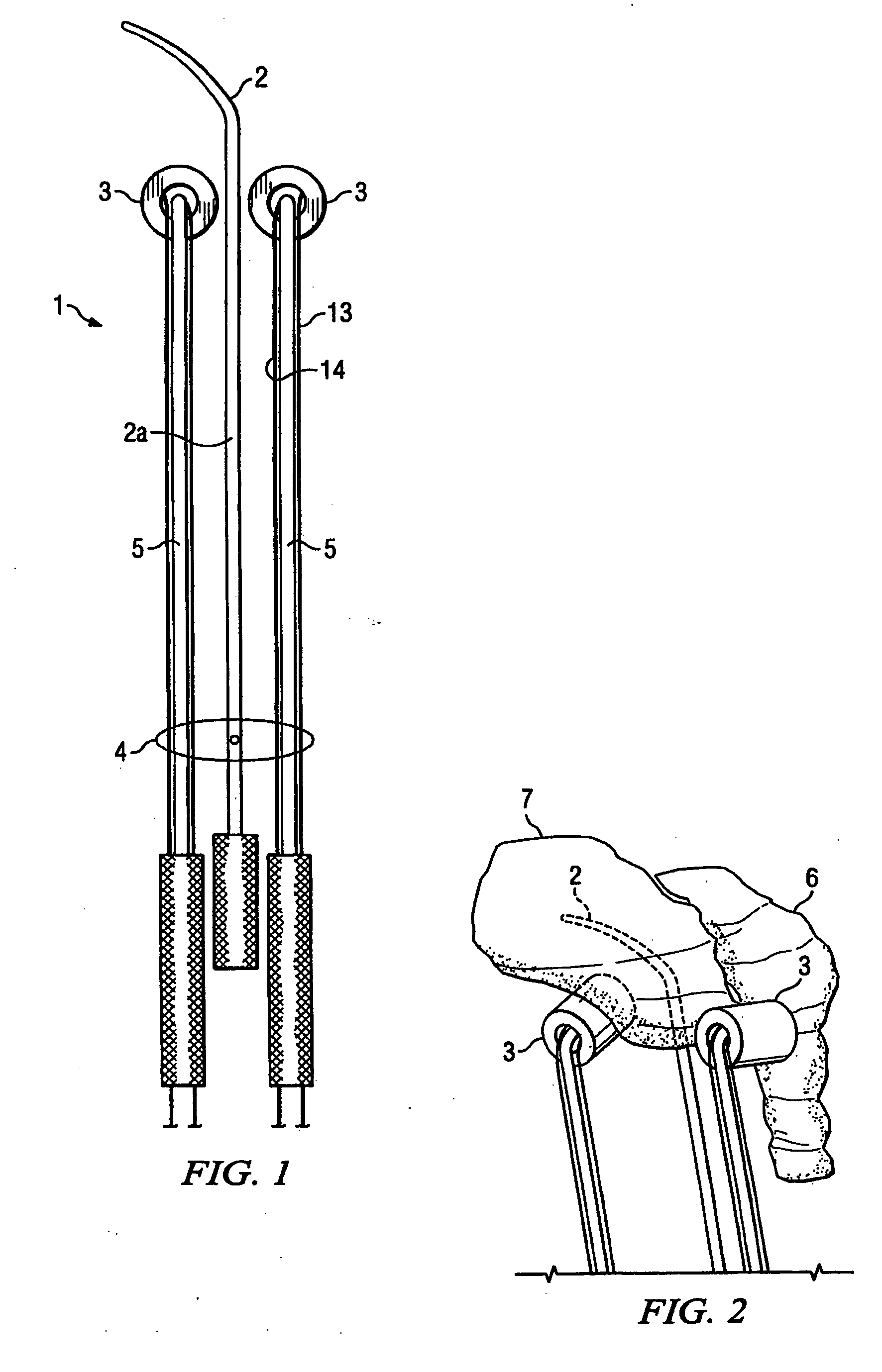Adaptive intracavitary brachytherapy applicator
a brachytherapy applicator and intracavitary technology, applied in radiation therapy, therapy, etc., can solve the problems of large errors, limited techniques, and 30% or more in the predicted dose to critical organs, so as to improve the reduce the complications rate, and improve the effect of current brachytherapy clinical outcom
- Summary
- Abstract
- Description
- Claims
- Application Information
AI Technical Summary
Benefits of technology
Problems solved by technology
Method used
Image
Examples
Embodiment Construction
[0034] The present disclosure provides a novel adaptive brachytherapy applicator that is image acquisition-compatible and includes one or more remotely-controlled radially (rotation) and linearly (translation) movable shield(s) within an ovoid (or colpostats), a tandem, or other structure containing a radioactive source lumen. This novel applicator may be used for LDR, PDR, and / or HDR brachytherapy. Use of certain embodiments of the present invention is expected to improve on the current ICBT clinical outcome, in particular by reducing the complications rate.
[0035] The ability to alter the position of any shielding during an image acquisition, such as a CT scan, can reduce the imaging artifacts thereby increasing the precision with which important anatomical structures can be delineated. Improvement in target delineation accuracy can allow tailoring of the minimum target dose and the prescription isodose surface shape. In addition, a movable shield(s) can provide an increased degre...
PUM
 Login to View More
Login to View More Abstract
Description
Claims
Application Information
 Login to View More
Login to View More - R&D
- Intellectual Property
- Life Sciences
- Materials
- Tech Scout
- Unparalleled Data Quality
- Higher Quality Content
- 60% Fewer Hallucinations
Browse by: Latest US Patents, China's latest patents, Technical Efficacy Thesaurus, Application Domain, Technology Topic, Popular Technical Reports.
© 2025 PatSnap. All rights reserved.Legal|Privacy policy|Modern Slavery Act Transparency Statement|Sitemap|About US| Contact US: help@patsnap.com



